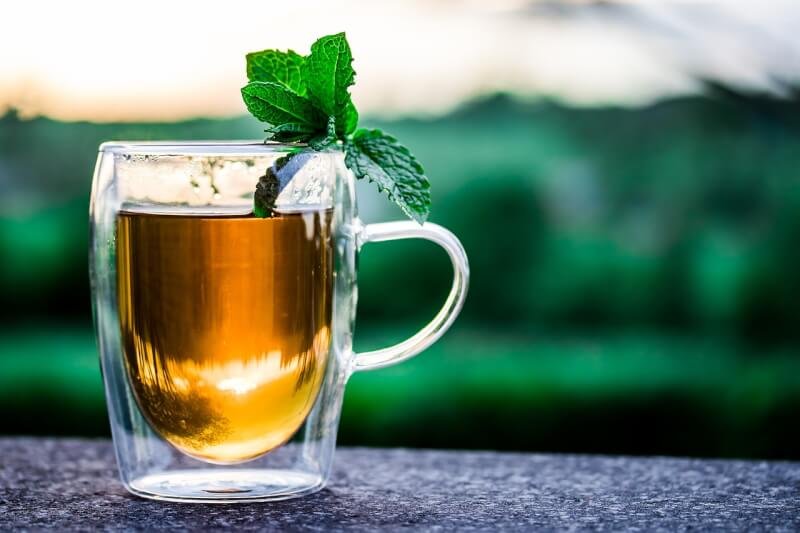Have you ever wondered how to create the perfect cup of tea? Look no further! In this article, we will explore the art of tea infusion and how various ingredients can enhance your tea-drinking experience. From fresh herbs and spices to dried fruits and flowers, there are endless possibilities for creating unique and flavorful tea blends. Get ready to embark on a tea-tasting adventure as we guide you through the process of creating your own perfect tea infusions.
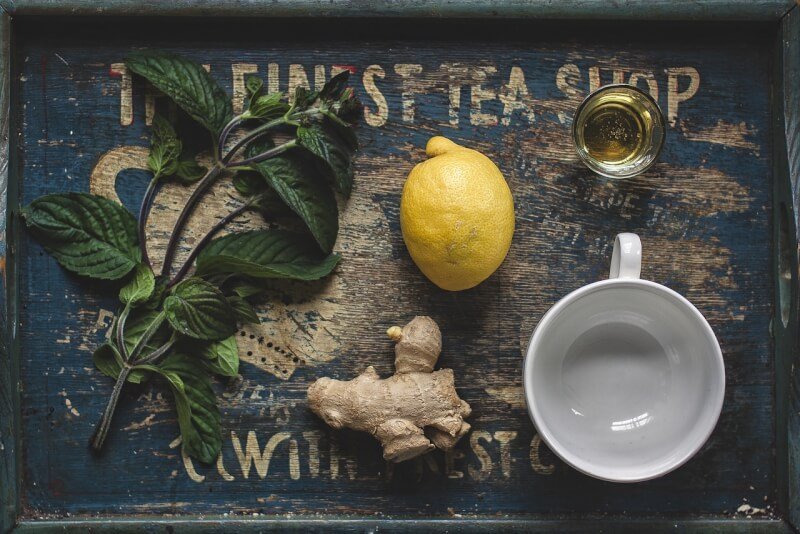
Choosing the Right Tea Base
Understanding Different Types of Tea
When it comes to choosing the right tea base for your infusion, it’s important to understand the different types of tea available. The most common types include black tea, green tea, white tea, oolong tea, and herbal tea. Each variety has its own distinct flavor profile and characteristics, which can greatly impact the overall taste of your infusion. For example, black tea has a robust and full-bodied taste, while green tea offers a fresh and grassy flavor. White tea has a delicate and subtle taste, while oolong tea falls somewhere in between black and green tea. Herbal teas, on the other hand, are not technically teas as they are made from herbs and botanicals rather than the Camellia Sinensis plant. It’s important to consider the flavor profile you desire when selecting your tea base.
Factors to Consider in Choosing a Tea Base
When choosing a tea base for your infusion, there are several factors to consider. Firstly, consider the flavor profile you are aiming for and which tea best complements the ingredients you plan to infuse. For example, if you are using citrus fruits, green tea or white tea would pair nicely due to their light and floral flavors. Additionally, consider the caffeine content of the tea base, as this can vary. If you are sensitive to caffeine or prefer a decaffeinated infusion, herbal teas are a great option. It’s also important to consider any dietary restrictions or allergies you or your guests may have, as some teas may contain allergens such as nuts or gluten. By taking these factors into consideration, you can ensure that your tea base enhances the overall flavor of your infusion.
Exploring Various Infusion Ingredients
Herbs and Botanicals
Herbs and botanicals are a popular choice for tea infusions, as they offer a wide range of flavors and health benefits. From calming chamomile to invigorating peppermint, there are countless herbs and botanicals to choose from. When using herbs, it’s important to consider their individual characteristics and flavors. For example, lavender adds a floral and soothing note, while ginger provides a spicy kick. Experiment with different combinations of herbs to find the perfect flavor profile for your infusion.
Fruits and Citrus
Fruits and citrus can add a refreshing and vibrant twist to your tea infusion. From zesty lemon to sweet berries, the options are endless. When using fruits and citrus, consider the ripeness and sweetness levels of the ingredients. Ripe fruits will impart a stronger flavor, while slightly underripe fruits may add a subtle tang. Additionally, citrus fruits like oranges and lemons can provide a burst of acidity to balance out the flavors in your infusion. Whether you choose to use fresh or dried fruits, incorporating them into your infusion can add a delightful burst of flavor.
Spices and Seasonings
Spices and seasonings can add depth and complexity to your tea infusion. From warming spices like cinnamon and nutmeg to savory additions like cardamom and cloves, spices can transform a simple tea base into a flavorful masterpiece. When using spices, it’s important to consider the intensity of the flavors. Strong spices like cloves or star anise should be used sparingly to avoid overpowering the other ingredients. Additionally, consider the overall flavor profile you are aiming for. For a cozy and comforting infusion, try adding spices like ginger and vanilla. Experiment with different spice combinations to find the perfect blend for your taste buds.
Flowers and Petals
Adding flowers and petals to your tea infusion can not only enhance the visual appeal but also add a delicate and fragrant flavor. From vibrant hibiscus petals to aromatic rose buds, flowers can provide a unique and elegant touch to your infusion. When using flowers, be mindful of their potency and flavor. Some flowers, such as lavender or chamomile, have a strong aroma and can easily overpower other ingredients if used in excess. Consider using flowers in moderation until you find the right balance for your infusion. Not only will they add a beautiful touch, but they will also introduce a subtle floral note that can make your infusion truly special.
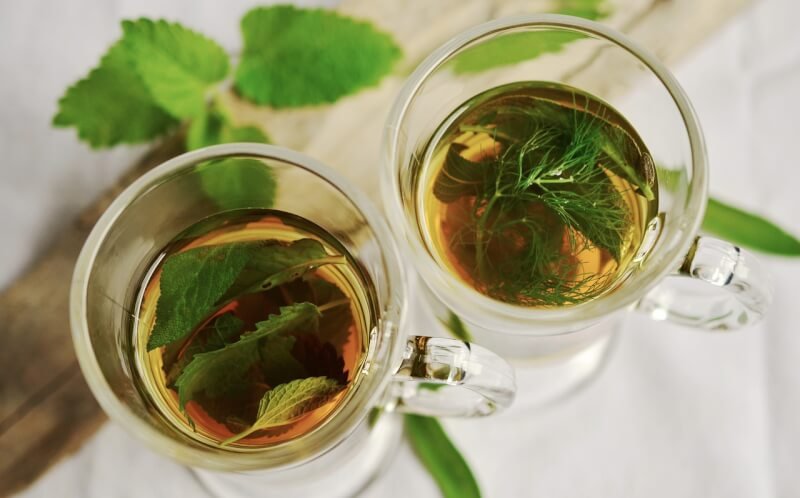
How to Prepare Tea for Infusions
Understanding Water Temperature
Proper water temperature plays a crucial role in achieving a well-balanced and flavorful infusion. Different types of tea require different water temperatures for optimal results. In general, green and white teas should be steeped at lower temperatures, around 160-180°F (70-82°C), as higher temperatures can result in a bitter taste. Black teas, on the other hand, can withstand higher temperatures, typically between 200-212°F (93-100°C), to extract their full-bodied flavors. Herbal teas can be steeped at boiling point, as they are not as sensitive to temperature. It’s important to invest in a reliable thermometer or electric kettle with temperature control to ensure you achieve the perfect water temperature for your chosen tea base.
Proper Steep Time and Ratios
The steep time and ratios of tea to water are crucial in creating a well-balanced and flavorful infusion. For most tea bases, a steeping time of 3-5 minutes is recommended. However, this can vary depending on personal preference and the specific tea variety being used. It’s always best to refer to the packaging or consult a trusted tea resource for precise steeping instructions. In terms of ratios, a general guideline is to use 1 teaspoon of loose leaf tea or one tea bag per 8 ounces (240 mL) of water. However, this can be adjusted based on personal preference and desired strength. Experiment with different steeping times and ratios to find your perfect infusion.
Using Loose Leaf vs. Tea Bags
When preparing tea for infusions, the choice between loose leaf tea and tea bags is largely a matter of personal preference and convenience. Loose leaf tea generally offers a higher quality and more robust flavor, as the leaves have more room to expand and infuse in the water. However, brewing loose leaf tea often requires the use of an infuser or strainer to separate the leaves from the liquid. Tea bags, on the other hand, are a convenient option for quick and easy infusions. They typically contain pre-measured portions of tea and can be easily disposed of after use. While the flavor may not be as nuanced as loose leaf tea, tea bags are a practical choice for those who prefer convenience. Ultimately, the choice between loose leaf and tea bags depends on your personal preferences and the desired complexity of your infusion.
Tea Infusion Techniques
Hot Infusion
Hot infusion is the most common and traditional method of creating tea infusions. To make a hot infusion, you will need hot water at the appropriate temperature for your chosen tea base. Steep the tea for the recommended amount of time, usually between 3-5 minutes, and strain or remove the tea leaves. Hot infusion allows for the flavors to fully develop and blend together, resulting in a rich and aromatic cup of tea. This method is perfect for those who prefer a steamy, comforting beverage.
Cold Infusion
Cold infusion is a refreshing alternative to hot infusion, often preferred during hot summer months. To make a cold infusion, simply add your desired tea base to cold water and let it steep for an extended period, typically overnight in the refrigerator. This method results in a smooth and subtle infusion, perfect for those who enjoy a mellow and chilled beverage. Cold infusion is generally used for more delicate teas like green or white tea, as it extracts less bitterness and allows for a more gentle flavor profile.
Sun Tea
Sun tea is a unique method of creating tea infusions by utilizing the power of the sun. To make sun tea, place your desired tea base in a glass container of cold water and allow it to sit in direct sunlight for several hours. The heat from the sun will gradually infuse the tea leaves into the water, resulting in a naturally brewed and flavorful infusion. It’s important to note that sun tea can only be made with tea bases that are not prone to bacterial contamination, such as herbal teas or some black teas. Ensure that your container is clean and sterilized to prevent any potential health risks.
Multiple Infusions
Certain tea bases, such as traditional Chinese teas like oolong or pu-erh, can withstand multiple infusions. This means that the same tea leaves can be steeped multiple times, yielding different flavors and nuances with each infusion. To achieve multiple infusions, simply follow the steeping instructions for your chosen tea base, and after the first infusion, increase the steeping time for subsequent infusions. This method allows you to fully explore the flavors and complexities of the tea leaves while maximizing their potential. Multiple infusions are a great way to appreciate the art and craftsmanship of high-quality teas.
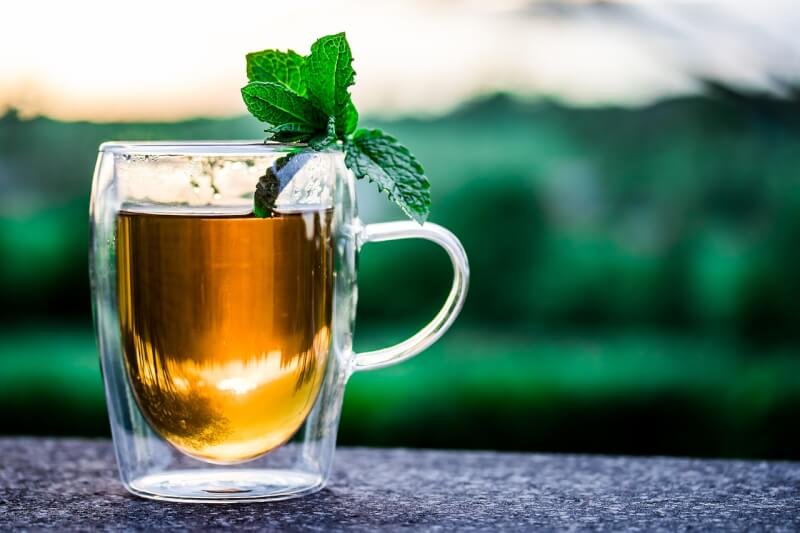
Enhancing Flavors with Sweeteners
Natural Sweeteners
If you prefer a touch of sweetness in your tea infusion, there are several natural sweeteners to choose from. Honey is a popular choice, as it adds a unique flavor profile and pairs well with a wide range of teas. Agave nectar, maple syrup, and stevia are other natural sweeteners that can be used in moderation to enhance the flavors of your infusion. When using natural sweeteners, start with a small amount and adjust to your taste. These options provide a healthier alternative to processed sugars and allow you to indulge in a naturally sweetened cup of tea.
Artificial Sweeteners
For those who are watching their sugar intake or prefer a calorie-free option, artificial sweeteners can be used in tea infusions. However, it’s important to use them in moderation and be aware of their potential health effects. Artificial sweeteners like sucralose, aspartame, and saccharin are highly concentrated and can be much sweeter than regular sugar. It’s advisable to experiment with different brands and types of artificial sweeteners to find one that best suits your taste. However, keep in mind that natural sweeteners are generally a healthier choice.
Using Sweeteners in Moderation
Regardless of whether you choose natural or artificial sweeteners, it’s important to use them in moderation. Sweeteners can quickly overpower the flavors of your tea infusion, so start with a small amount and gradually add more if desired. The goal is to enhance the flavors of the infusion, rather than masking them with excessive sweetness. Remember that tea infusions can be enjoyed without sweeteners, as many ingredients like fruits and herbs already contribute their own natural sweetness. It’s always best to taste and adjust along the way, ensuring a well-balanced and enjoyable cup of tea.
Adding Milk or Cream
Types of Milk and Cream
Adding milk or cream to your tea infusion can create a creamy and indulgent beverage. There are several types of milk and cream to choose from, each with its own distinct flavor and characteristics. Cow’s milk is the most commonly used option and adds a rich and smooth texture to tea. For those who prefer a dairy-free alternative, plant-based milks like almond, soy, or oat milk can provide a creamy base without the lactose. Additionally, cream options such as half-and-half or heavy cream can add an extra luxurious touch to your infusion. Consider your dietary preferences and taste preferences when selecting the type of milk or cream for your tea infusion.
Pairing Tea and Milk
Not all tea bases pair well with milk or cream, so it’s important to consider the flavor profiles and characteristics of both. Strong and robust teas like black teas or chai blends are ideal for pairing with milk, as they can withstand the added richness. The creaminess of the milk can mellow out the strong tannins and provide a balanced and smooth flavor. However, more delicate teas like green or white teas may be overshadowed by the addition of milk. It’s best to experiment with different combinations and ratios to find the perfect balance between tea and milk that suits your taste buds.
Proper Ratio and Preparation
The ratio of tea to milk or cream is crucial in achieving a well-balanced cup of tea. For a traditional cup of tea with milk, start with a ratio of 1 part tea to 3 parts milk. Adjust according to your taste preference, whether you prefer a stronger tea flavor or a creamier texture. It’s important to remember that milk or cream should be added after the tea has been steeped and strained. This allows for optimal control of flavors and prevents any interference with the tea’s brewing process. By following these steps, you can create a perfectly balanced cup of tea with just the right amount of milk or cream.

Creating Tea Infusion Combinations
Pairing Complementary Flavors
Creating tea infusion combinations involves selecting ingredients that complement and enhance each other’s flavors. For example, pairing citrus fruits like lemon or orange with herbal teas can add a refreshing and tangy twist. Combining berries with black or green teas can provide a fruity and vibrant infusion. Spices like cinnamon or cardamom can be paired with oolong tea for a warm and spicy flavor. The key is to experiment with different combinations and take note of the individual characteristics of each ingredient. By considering the flavors, aromas, and intensities of the ingredients, you can create well-balanced and harmonious tea infusion combinations.
Balancing Strong and Subtle Flavors
When creating tea infusion combinations, it’s important to find a balance between strong and subtle flavors. Strong ingredients like spices or robust tea bases can overpower more delicate flavors if not used in moderation. Likewise, subtle ingredients like flowers or herbs may go unnoticed if overridden by bold flavors. The goal is to create a harmonious blend where each ingredient complements and enhances the others. A good rule of thumb is to start with a small amount of each ingredient and gradually add more to achieve the desired flavor. It’s also helpful to taste the infusion throughout the process and make adjustments as needed.
Experimenting with Personal Preferences
Tea infusions offer endless possibilities for experimentation and personalization. Don’t be afraid to get creative and try new combinations of ingredients that suit your taste preferences. Whether it’s a unique spice blend or an unexpected fruit pairing, the world of tea infusions is yours to explore. Keep track of your experiments and note the flavors that you enjoy the most. This will help you develop your own signature tea infusion combinations that can be enjoyed time and time again. Remember, tea infusions are meant to be enjoyed, so have fun and let your taste buds guide you on a delightful culinary journey.
Presentation and Serving Ideas
Glass Teapots and Infusers
When it comes to presentation, using glass teapots and infusers can add an elegant and visually appealing touch to your tea infusions. Glass vessels allow you to showcase the beautiful colors and textures of the ingredients, creating a feast for the eyes. Not only do glass teapots and infusers enhance the overall presentation, but they also provide a practical way of brewing and serving tea. Glass allows you to monitor the strength and color of the infusion, ensuring a perfectly brewed cup every time. Consider investing in high-quality glassware to elevate your tea infusion experience.
Garnishing with Fresh Ingredients
Garnishing your tea infusions with fresh ingredients can add a delightful pop of color and flavor. Consider using edible flowers, citrus slices, or herbs as garnishes. Not only do they enhance the visual appeal of the beverage, but they also provide an aromatic and flavorful finishing touch. Play around with different garnishes that complement the ingredients in your infusion. Whether it’s a sprig of fresh mint or a slice of lemon, these small additions can make a big impact on the overall presentation and experience of your tea infusion.
Serving Temperatures
Tea infusions can be enjoyed at various serving temperatures, depending on personal preference and the ingredients used. Hot infusions are typically served at temperatures between 160-180°F (70-82°C), allowing the flavors to fully develop and unfold. If you prefer a more refreshing option, you can chill the infusion in the refrigerator and serve it cold. This is especially enjoyable during hot summer months. Cold infusions can be served over ice for a crisp and invigorating beverage. Consider experimenting with different serving temperatures to find what suits your taste and the occasion best.
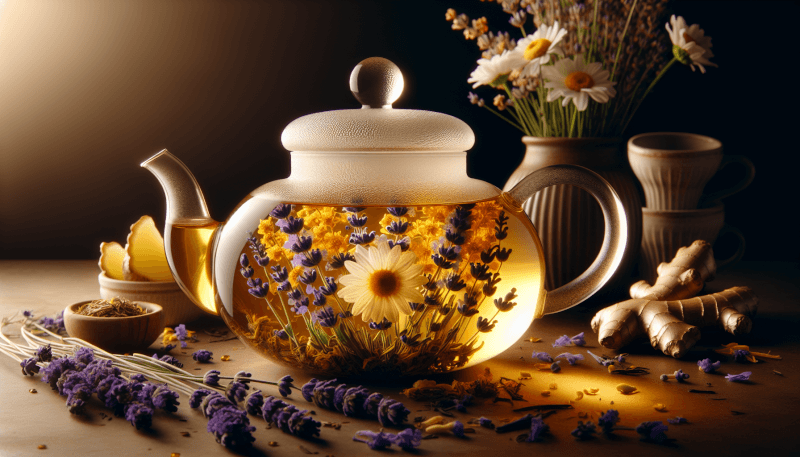
Storing and Preserving Infusions
Proper Storage Containers
To ensure the longevity and freshness of your tea infusions, it’s important to store them properly. Airtight containers, such as glass jars or tins, are ideal for preserving the flavor and aroma of your infusions. Exposure to air, light, and moisture can degrade the quality of the ingredients and result in a less flavorful infusion. It’s best to store your infusions in a cool, dry place away from direct sunlight. Avoid storing them near strong-smelling substances, as tea has a tendency to absorb odors easily. By using the right storage containers and conditions, you can enjoy your tea infusions at their best for a longer period.
Preserving Freshness and Flavor
To preserve the freshness and flavor of your tea infusions, there are a few additional steps you can take. Firstly, ensure that the ingredients used are of high quality and have not been exposed to excessive heat or moisture. This can greatly affect the taste and longevity of your infusions. Secondly, make sure to seal the containers tightly after each use to prevent air from entering. This will help retain the aroma and flavor of the infusion. Lastly, consider using small individual portions or making smaller batches to minimize the time between opening the container and finishing the infusion. By following these steps, you can ensure that your tea infusions stay fresh and vibrant for a longer period.
Recommended Shelf Life
The shelf life of tea infusions can vary depending on the ingredients used and how they are stored. Generally, properly stored herbal infusions can last for up to one year, while tea blends that contain herbs, fruits, or other ingredients may have a shorter shelf life. It’s important to check the packaging or consult a trusted source for specific recommendations on shelf life. Over time, the flavors and aromas of the infusion may gradually diminish, resulting in a less vibrant taste. To fully enjoy the freshness and complexity of your tea infusions, it’s best to consume them within their recommended shelf life.
Exploring Health Benefits of Tea Infusions
Antioxidant Properties
Tea infusions, especially those made from Camellia Sinensis leaves, are known for their antioxidant properties. Antioxidants help protect the body from damaging free radicals and promote overall health and well-being. The natural polyphenols found in tea leaves have been linked to a range of health benefits, including reduced risk of chronic diseases, improved heart health, and enhanced brain function. By incorporating tea infusions into your daily routine, you can harness the power of antioxidants and support your body’s natural defenses.
Boosting Immunity
Many tea ingredients, such as ginger, turmeric, or echinacea, have immune-boosting properties. These ingredients can help strengthen the immune system and support overall health. Ginger, for example, has long been used to ease digestion and soothe sore throats, while turmeric is known for its anti-inflammatory properties. By selecting tea infusions that contain immune-boosting ingredients, you can give your body an extra dose of support and protection.
Promoting Digestion
Certain tea ingredients, such as peppermint, chamomile, or fennel, can aid in digestion and soothe gastrointestinal discomfort. Peppermint, for instance, has been used for centuries to relieve indigestion and bloating. Chamomile is known for its calming effects on the stomach and can help ease symptoms of acid reflux or irritable bowel syndrome. By incorporating tea infusions that promote digestion into your routine, you can experience relief and support your overall digestive health.
Relaxation and Stress Relief
Tea infusions have long been associated with relaxation and stress relief. Ingredients like chamomile, lavender, or lemon balm can have a calming effect on the mind and body, promoting a sense of relaxation and well-being. These ingredients contain natural compounds that can help reduce anxiety and improve sleep quality. By sipping on a soothing tea infusion, you can create a peaceful moment in your day and give yourself the opportunity to unwind and recharge.
In conclusion, creating the perfect tea infusion is an art that requires a good understanding of the different types of tea, the various infusion ingredients, and the proper techniques for preparation. By selecting the right tea base, experimenting with different flavors, and using the appropriate brewing methods, you can create a delightful and personalized tea infusion that suits your taste preferences. Whether you choose to enhance the flavors with sweeteners or add a touch of milk or cream, the possibilities for creating unique and delicious tea infusions are endless. So gather your favorite ingredients, steep a cup of goodness, and enjoy the wonderful world of tea infusions. Cheers to a perfectly brewed cup every time!

